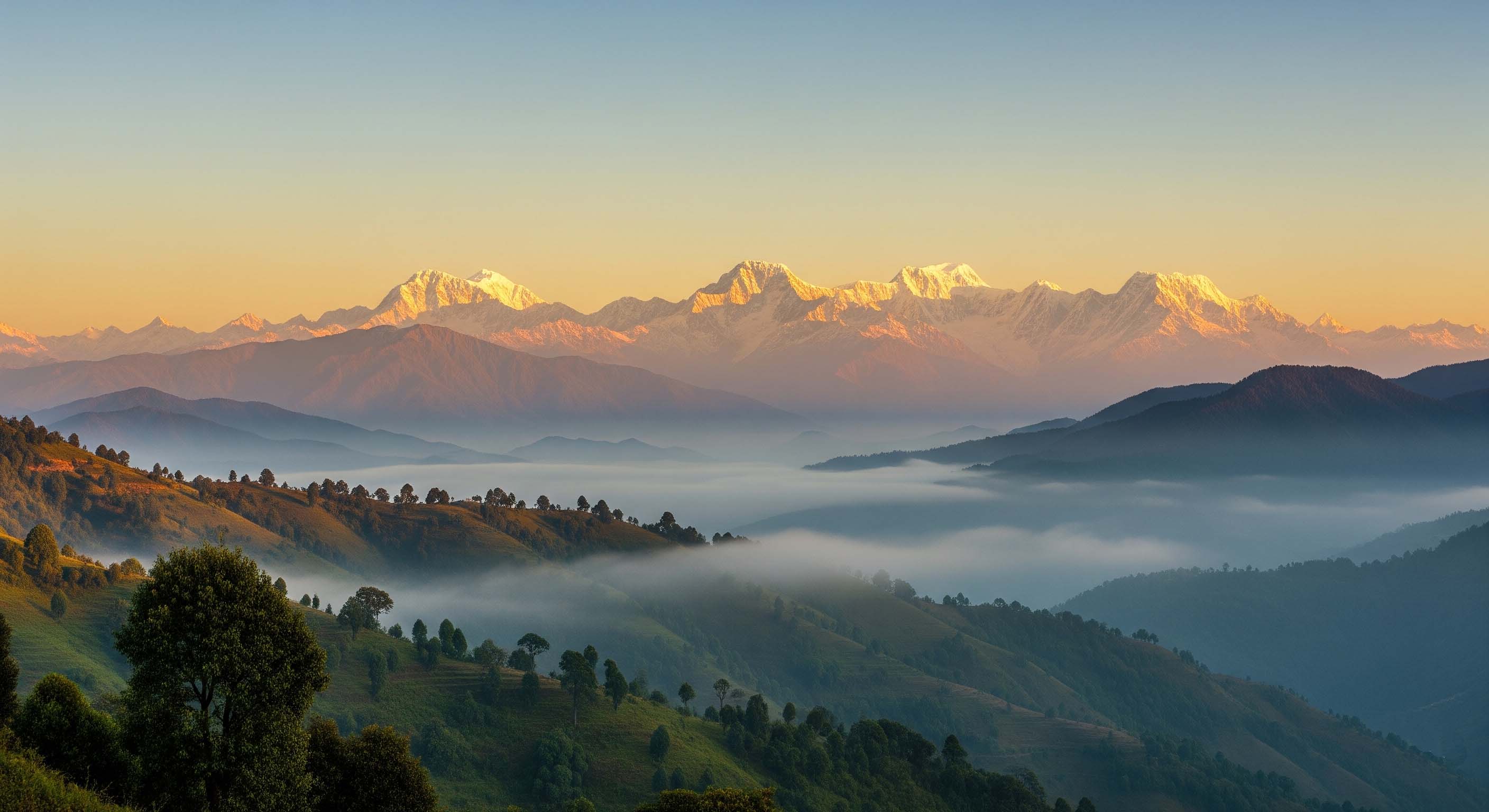Introduction: The Victory of Light Over Darkness
Diwali, also known as Deepavali, is the most celebrated festival in Hindu tradition, observed by millions of people worldwide. The name "Deepavali" literally means "row of lights," symbolizing the spiritual victory of light over darkness, knowledge over ignorance, and good over evil.
This five-day festival, typically falling between October and November, represents more than just external celebration—it's a profound spiritual journey that invites us to illuminate our inner consciousness and transform our lives through divine grace.
Festival Dates: Diwali is celebrated on the new moon day (Amavasya) in the Hindu month of Kartik, usually falling between October 13 and November 14 each year.
The Five Sacred Days of Diwali
Day 1: Dhanteras - Welcoming Prosperity

Dhanteras marks the beginning of Diwali celebrations, honoring Dhanvantari, the divine physician, and Goddess Lakshmi. This day emphasizes the importance of health and prosperity in our lives.
Traditional Practices:
- Home Cleaning: Deep cleaning represents purification of mind and environment
- Shopping for Metals: Purchasing gold, silver, or utensils symbolizes inviting prosperity
- Lakshmi Puja: Evening worship with diyas and flowers
- Rangoli Creation: Decorative patterns to welcome positive energy
Spiritual Significance:
Dhanteras teaches us that true wealth includes physical health, mental peace, and spiritual prosperity. The cleaning ritual represents removing negative thoughts and preparing our consciousness for divine blessings.
Day 2: Naraka Chaturdashi - Victory Over Inner Demons

Also known as Choti Diwali, this day commemorates Lord Krishna's victory over the demon Narakasura, symbolizing the triumph over our inner negative qualities.
Rituals and Meaning:
- Early Morning Bath: Purification with oil represents cleansing negative karma
- Breaking Fast: Symbolic of breaking free from limiting patterns
- Lighting 14 Diyas: Each light represents overcoming different negative qualities
- Charitable Acts: Sharing with others to cultivate compassion
This day reminds us that spiritual victory requires constant vigilance against pride, anger, greed, and other inner obstacles to our evolution.
Day 3: Lakshmi Puja - The Main Celebration

The third day is the heart of Diwali, dedicated to Goddess Lakshmi, the divine mother of abundance, prosperity, and spiritual wealth.
Evening Puja Procedure:
- Preparation: Clean home, wear new clothes, create rangoli
- Altar Setup: Place Lakshmi image with lotus flowers and sweets
- Lighting Ceremony: Light oil lamps throughout the home
- Mantra Chanting: "Om Shreem Maha Lakshmiyei Namaha"
- Offering: Present flowers, fruits, and sweets to the goddess
- Aarti: Circular lamp ceremony with devotional songs
- Prasad Distribution: Share blessed food with family
Why Light Oil Lamps?
- Symbolic Meaning: Each flame represents awakening divine consciousness
- Energy Purification: Light dispels negative energies from living spaces
- Guiding Light: Helps Lakshmi find her way to our homes
- Inner Illumination: Reminds us to kindle our inner spiritual light
Day 4: Govardhan Puja - Gratitude to Nature

This day celebrates Lord Krishna's lifting of Govardhan Hill to protect villagers, emphasizing our relationship with nature and environmental responsibility.
Celebration Methods:
- Food Mountains: Creating elaborate vegetarian feasts
- Nature Worship: Honoring mountains, rivers, and trees
- Community Feeding: Sharing meals with neighbors and animals
- Environmental Prayers: Gratitude for natural resources
Modern Relevance: Govardhan Puja reminds us of our duty to protect the environment and live sustainably, showing how ancient wisdom addresses contemporary ecological concerns.
Day 5: Bhai Dooj - Celebrating Relationships

The final day honors the sacred bond between siblings, celebrating the protective love and mutual support within families.
Traditional Customs:
- Tilaka Ceremony: Sisters apply sacred marks on brothers' foreheads
- Prayer for Protection: Sisters pray for brothers' well-being and success
- Gift Exchange: Brothers give gifts to show appreciation and love
- Special Meals: Families gather for festive dining together
Spiritual Lesson: This day teaches us that spiritual growth flourishes in an atmosphere of love, support, and mutual care within our relationships.
Modern Diwali Celebration: Adapting Ancient Wisdom
Urban Living Adaptations
Celebrating Diwali in modern apartments and busy lifestyles requires creative adaptations while maintaining spiritual essence:
Space-Conscious Celebrations:
- LED Alternatives: Use safe LED strings instead of traditional oil lamps
- Table Altar: Create beautiful puja setups on dining tables or corners
- Digital Rangoli: Project patterns or use removable floor decals
- Apartment Community: Organize building-wide celebrations
Eco-Friendly Diwali:
- Natural Diyas: Use clay lamps with organic oil
- Flower Decorations: Fresh flowers instead of plastic ornaments
- Homemade Sweets: Prepare traditional treats using organic ingredients
- Noise-Free Celebration: Focus on light and prayers rather than firecrackers
Teaching Children About Diwali

Passing Diwali traditions to the next generation requires age-appropriate explanations and engaging activities:
For Young Children (Ages 3-8):
- Simple stories about good defeating bad
- Hands-on activities like making rangoli with colored rice
- Learning to light safe LED candles
- Singing simple Diwali songs and rhymes
For Older Children (Ages 9-15):
- Deeper stories about Rama's return and Krishna's victories
- Understanding the spiritual symbolism of light
- Learning basic Sanskrit mantras and their meanings
- Participating in community service and charity
The Spiritual Journey of Diwali
Inner Transformation Through Festival Observance
Diwali offers a structured path for spiritual development through its five-day progression:
Day-by-Day Spiritual Practice:
- Day 1 - Purification: Cleanse physical and mental environment
- Day 2 - Self-Examination: Identify and overcome negative patterns
- Day 3 - Divine Connection: Open heart to receive divine grace
- Day 4 - Gratitude: Appreciate all forms of abundance in life
- Day 5 - Love: Strengthen bonds with family and community
Meditation Practices for Diwali

Enhance your Diwali celebration with these special meditation practices:
Light Meditation (Trataka):
- Sit comfortably in front of a lit diya or candle
- Gaze softly at the flame for 2-3 minutes without blinking
- Close your eyes and visualize the flame in your heart center
- Feel the inner light spreading throughout your body
- End with gratitude for the divine light within you
Lakshmi Visualization:
- Visualize Goddess Lakshmi seated on a lotus in your heart
- See her blessing you with golden light of prosperity
- Feel abundance flowing into all areas of your life
- Chant "Om Shreem Lakshmiyei Namaha" 108 times
- Conclude by offering mental flowers and gratitude
Regional Variations and Cultural Richness
Diwali Across Different States
While the spiritual essence remains constant, Diwali celebrations vary beautifully across different regions:
- North India: Emphasis on Rama's return to Ayodhya, grand fireworks
- West India (Gujarat/Maharashtra): Business community prayers, Lakshmi Puja focus
- South India: Naraka Chaturdashi is main day, oil bath traditions
- East India (Bengal): Kali Puja coincides with Diwali, goddess worship
- Nepal: Five-day Tihar festival with animal worship
Conclusion: Carrying Diwali's Light Throughout the Year
Diwali's greatest gift is not in the temporary brightness of external lights, but in awakening the eternal light of consciousness within us. The festival teaches us that we have the power to dispel darkness in any form—whether ignorance, fear, hatred, or despair—by kindling the flame of divine awareness in our hearts.
As we light each diya during Diwali, let us remember that we are not just decorating our homes, but illuminating our souls. The true celebration continues when we carry this inner light into our daily lives, spreading love, compassion, and wisdom wherever we go.
"दीपावली का यह प्रकाश, जीवन में लाए खुशियों का एहसास।- Traditional Diwali Blessing
May this Diwali light bring the feeling of happiness in life."
Practical Diwali Preparation Checklist
Two Weeks Before:
- Plan home cleaning and decoration
- Order or prepare traditional sweets
- Purchase puja items and gifts
- Coordinate with family and friends
Week of Diwali:
- Complete home cleaning and decoration
- Set up altar space for Lakshmi Puja
- Prepare rangoli designs
- Purchase fresh flowers and fruits
Day of Celebration:
- Early morning spiritual practice
- Light oil lamps before sunset
- Perform Lakshmi Puja with family
- Share sweets and gifts with loved ones

Share Your Diwali Experiences
Join our discussion forum to share your Diwali celebration stories and connect with our community.